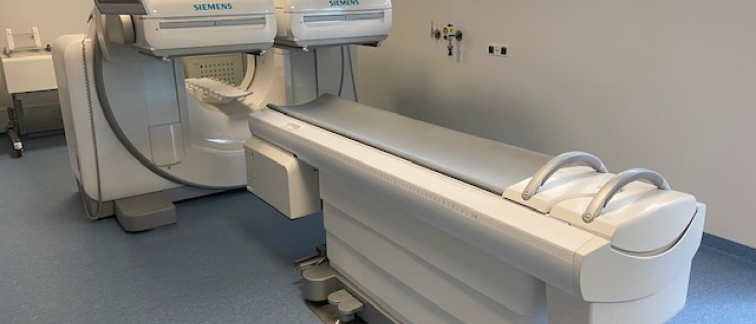SPECT/CT imaging
SPECT is used in routine practice in all parts of medicine. Today, the majority of available SPECT systems are combined SPECT/CT systems. This offers the advantage for an optimized attenuation correction and localization of radiotracer binding, and also the complementary information that is produced by the CT images. At the Amsterdam UMC, several SPECT systems are available. SPECT imaging is used for clinical research in the field of neurology (particularly related to movement disorders; a dedicated brain SPECT system is available at the AMC), endocrinology/metabolism (related to e.g. metabolic disorders/obesity), gastroenterology (liver function), oncology (e.g. sentinel node detection), and cardiology (ischemia detection/ cardiac innervation).
Radionuclide therapy
At the Amsterdam UMC, radionuclide therapy is focused on iodine-131 treatment of diseases of the thyroid, including thyroid carcinoma, and radium-233 therapy for prostate cancer. Research is undertaken on lutetium-177 therapy in neuroendocrine tumors and prostate cancer.

